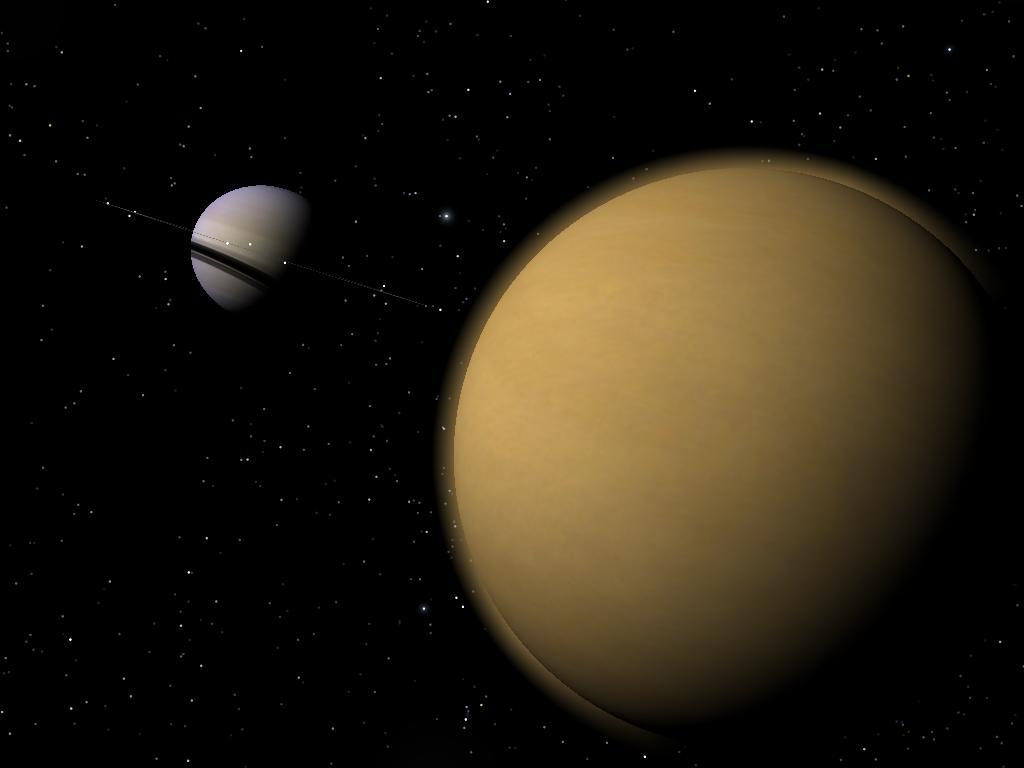The moon titan is an interesting celestial body located on the outer edge of the solar system that’s not nearly as well-known as other planets and moons in our solar system such as Jupiter or Earth, but there are actually some very interesting facts about this celestial body that you might not know. Here are five facts about the moon titan you probably didn’t know.
1) The largest moon in our solar system
It is even larger than planet Mercury. If it were a planet, Titan would be bigger than Mars, but as a satellite of Saturn, it’s smaller than our own Moon. Its atmosphere is full of organic chemicals and it might be covered in oceans of methane or ethane.
2) Closest to Saturn
Although it is farther from Saturn than many of its fellow moons, Titan ranks third overall for surface area. Titan takes up 2.6 percent of Saturn’s total surface area, with only Enceladus and Tethys coming in ahead of it at 3.3 percent and 4.1 percent, respectively. And that’s just surface area! Titan also has a volume of 607 cubic miles—the equivalent to 0.0021 Earths! In fact, it was one of these Earth-sized planets that inspired astronomer William Herschel to give Titan its name in 1789. From our perspective on Earth, Saturn appears as a bright yellow star when viewed through binoculars or a telescope; Herschel originally believed he had discovered another planet.
3) It may have an ocean
Scientists have long suspected that Saturn’s largest moon, Titan, holds liquid water beneath its frozen surface. Recent research suggests that as much as 30 percent of Titan’s surface may be covered in a slushy ocean composed of a mixture of water and ammonia. And while it might not be similar to Earth’s oceans, which are rich in salt, oxygen and other compounds, Titan’s subsurface liquid could contain a variety of amino acids that are essential for life. It’s also possible that hydrothermal vents at these depths could host unique ecosystems. The next step is to find out if there really is an ocean on Titan, and if so, how thick it is—which will require more detailed analysis from Cassini or future missions.
4) How it got its name
The moon Titan was named for a character in Greek mythology who is associated with astronomy. The team of astronomers who discovered Titan is French, so they named it after a character from Greek mythology. In Roman mythology, she is known as Tethys. In both myths, she is one of Saturn’s children and an ocean nymph. She married her brother Oceanus and became his queen. They had fifty daughters together, which are now called the fifty Naiads. The name Titan also has ties to astronomy. It comes from a group of stars that are found within our own solar system.
5) Scientists think it could sustain life
Titan has also attracted attention from astrobiologists. These scientists look for signs of life in places other than Earth, and Titan’s habitability is an attractive subject because it is considered one of a few prime real estate locations in our solar system that could sustain some sort of life. Scientists even think that if there was ever any form of life on Mars, its remnants could be buried under rocks on Titan’s surface. The fact that Titan is so much like Earth, except with liquid methane instead of water, makes it a perfect place to study how habitable worlds might differ from ours. The Cassini-Huygens mission proved to be an enormous success when it revealed just how unique Titan is—and how tantalizingly similar to our own planet.
![]()
